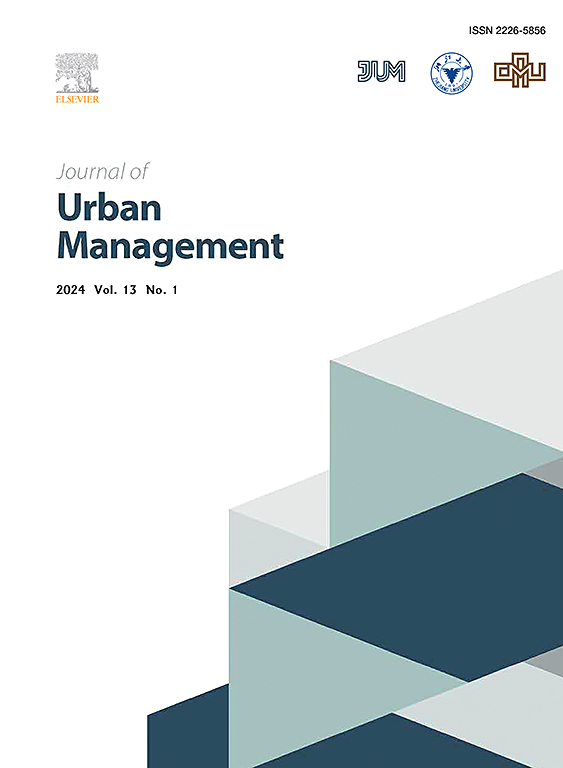Dynamics of urban sprawl: Deciphering the role of land prices and transportation costs in government-led urbanization
IF 5
2区 社会学
Q1 URBAN STUDIES
引用次数: 0
Abstract
While the relationship among land price, transportation cost, and urban sprawl under the condition of local governments monopolizing land supply has been rarely discussed in the literature, this paper addresses this gap by hypothesizing based on the monocentric city model. The hypothesis suggests that due to increasing land prices and decreasing transportation costs, urban fringes are more likely to be developed, leading residents to move away from the city center and altering the demographic pattern of urban sprawl. An empirical analysis is conducted using panel data from 104 cities in China, including remote sensing data of urban land construction areas. The results show that high land prices and low transportation costs drive urban sprawl, with varying impacts across cities. The coupling coordination analysis indicates increasing influence of urban sprawl on land prices and transportation costs. These findings suggest the government should address the effects of unplanned urban expansion on these factors. The findings suggest that the government should pay more attention to the effects of unplanned urban expansion on land prices and transportation costs. Understanding the role of local governments in urban planning is crucial for comprehending China's urbanization strategy and its implications on social exclusion, gentrification, high housing prices, and other urban issues.
城市无计划扩展的动态:解读土地价格和交通成本在政府主导的城市化进程中的作用
在地方政府垄断土地供应的条件下,土地价格、交通成本与城市扩张之间的关系在文献中鲜有论述,本文基于单中心城市模型提出假设,弥补了这一空白。该假设认为,由于地价上涨和交通成本下降,城市边缘地区更有可能得到开发,从而导致居民远离城市中心,改变城市无序扩张的人口模式。本文利用中国 104 个城市的面板数据(包括城市土地建设面积的遥感数据)进行了实证分析。结果表明,高地价和低交通成本推动了城市无序扩张,对不同城市的影响各不相同。耦合协调分析表明,城市扩张对地价和交通成本的影响越来越大。这些研究结果表明,政府应解决城市无计划扩张对这些因素的影响。研究结果表明,政府应更多地关注城市无计划扩张对地价和交通成本的影响。了解地方政府在城市规划中的作用对于理解中国的城市化战略及其对社会排斥、绅士化、高房价和其他城市问题的影响至关重要。
本文章由计算机程序翻译,如有差异,请以英文原文为准。
求助全文
约1分钟内获得全文
求助全文
来源期刊

Journal of Urban Management
URBAN STUDIES-
CiteScore
9.50
自引率
4.90%
发文量
45
审稿时长
65 days
期刊介绍:
Journal of Urban Management (JUM) is the Official Journal of Zhejiang University and the Chinese Association of Urban Management, an international, peer-reviewed open access journal covering planning, administering, regulating, and governing urban complexity.
JUM has its two-fold aims set to integrate the studies across fields in urban planning and management, as well as to provide a more holistic perspective on problem solving.
1) Explore innovative management skills for taming thorny problems that arise with global urbanization
2) Provide a platform to deal with urban affairs whose solutions must be looked at from an interdisciplinary perspective.
 求助内容:
求助内容: 应助结果提醒方式:
应助结果提醒方式:


